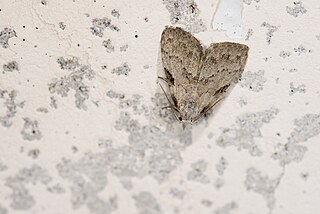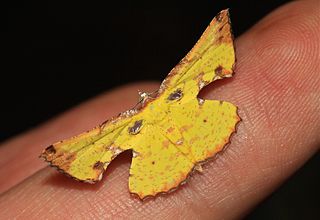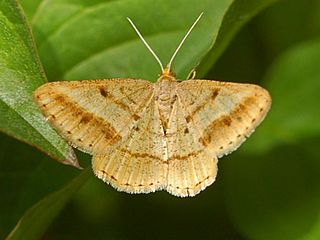
Aemene is a genus of moths in the family Erebidae first described by Francis Walker in 1854. They are found in Japan, throughout India and Sri Lanka.

Chamaita is a genus of moths in the subfamily Arctiinae. The genus was erected by Francis Walker in 1862. Species are distributed throughout India, Sri Lanka, and Borneo.

Earias is a genus of moths in the monotypic subfamily Eariadinae of the family Nolidae. The genus was erected by Jacob Hübner in 1825. Species are found throughout Europe, Africa, Asia and Australia, some being agricultural pests such as bollworms.

Digama is a genus of moths in the family Erebidae described by Frederic Moore in 1858. It is distributed in South Africa, China, throughout India, Sri Lanka, Myanmar and Australia.
Gampola is a genus of moths in the family Arctiidae. They were found from Sri Lanka, where the generic name is due to the Gampola area of Kandy, where the first species was discovered. In June 2016, another species was found from India and other few nearby countries such as China, Hong Kong, and Thailand.
Garudinia is a genus of moths in the subfamily Arctiinae first described by Moore in 1882.

Miltochrista is a genus of moths of the family Erebidae, subfamily Arctiinae. The genus was erected by Jacob Hübner in 1819.
Narosodes is a genus of moths in the family Erebidae first described by Moore in 1887.

Nudaria is a genus of moths in the subfamily Arctiinae erected by Adrian Hardy Haworth in 1809.

Oeonistis is a genus of moths in the family Erebidae first described by Jacob Hübner in 1819. They are found in India, Sri Lanka, Myanmar, Borneo and other minor islands of Oceania.
Padenia is a genus of moths in the subfamily Arctiinae described by Moore in 1882.

Lymantria is a genus of tussock moths in the family Erebidae. They are widely distributed throughout Europe, Japan, India, Sri Lanka, Myanmar, Java, and Celebes. The genus was erected by Jacob Hübner in 1819.
Pseudoblabes is a genus of moths in the subfamily Arctiinae first described by Philipp Christoph Zeller in 1853.

Spilosoma is a genus of moths in the family Erebidae originally described by John Curtis in 1825. A very heterogeneous group, it is in need of review by the scientific community, as certain species probably need reclassification into their own genera.

Manoba is a genus of moths in the family Nolidae. The genus was first described by Francis Walker in 1863.

Perina is a genus of tussock moths in the family Erebidae. It was described by Francis Walker in 1855 and is found in China, Sri Lanka and throughout India.

Corymica is a genus of moths in the family Geometridae described by Francis Walker in 1860.
Derambila is a genus of moths in the family Geometridae first described by Francis Walker in 1863.

Isturgia is a genus of moths in the family Geometridae described by Jacob Hübner in 1823.
Macaria is a genus of moths in the family Geometridae first described by John Curtis in 1826. It is sometimes placed as a synonym of Semiothisa. Species are cosmopolitan.













